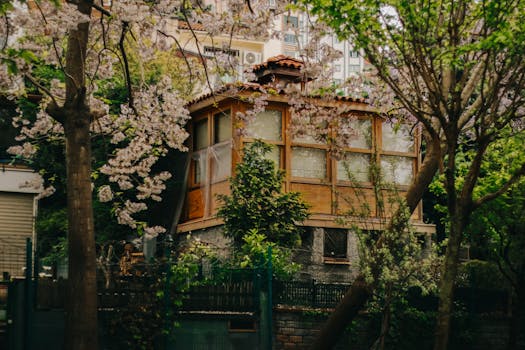
Urban Green Spaces: The Future of Outdoor Living in European Cities by 2025
Introduction to Urban Green Spaces
Urban green spaces, such as parks, gardens, and green roofs, are becoming increasingly important in European cities. These spaces provide a range of benefits, including improving air quality, mitigating the urban heat island effect, and promoting biodiversity. As we look to the future, it is clear that urban green spaces will play a vital role in shaping the way we live and interact with our cities.
The Benefits of Urban Green Spaces
Urban green spaces offer numerous benefits to both the environment and human health. Some of the key advantages of these spaces include:
- Improved air quality: Urban green spaces can help to remove pollutants from the air, improving the overall quality of the air we breathe.
- Mitigation of the urban heat island effect: Green spaces can help to cool cities by providing shade and reducing the amount of heat that is absorbed by buildings and pavement.
- Promotion of biodiversity: Urban green spaces can provide habitats for a range of plant and animal species, helping to promote biodiversity in urban areas.
- Improved mental health: Spending time in nature has been shown to have a positive impact on mental health, reducing stress and improving overall wellbeing.
The Future of Urban Green Spaces in European Cities
As we look to the future, it is clear that urban green spaces will continue to play a vital role in shaping the way we live and interact with our cities. Some of the key trends that are likely to shape the future of urban green spaces in European cities include:
- Increased focus on sustainability: As concern about the environment continues to grow, urban green spaces are likely to become an increasingly important part of sustainability initiatives in European cities.
- Integration with other urban systems: Urban green spaces are likely to become more integrated with other urban systems, such as transportation and energy systems, in order to create more efficient and sustainable cities.
- Use of technology: Technology, such as green roofs and walls, is likely to become more prominent in urban green spaces, helping to improve their functionality and efficiency.
Case Studies: Successful Urban Green Space Initiatives in European Cities
There are many examples of successful urban green space initiatives in European cities. Some notable case studies include:
- The High Line in London: This elevated park, built on an old rail line, has become a popular destination for both locals and tourists.
- The Park de la Villette in Paris: This large public park features a range of green spaces, including gardens, meadows, and forests.
- The Superkilen park in Copenhagen: This urban park features a range of green spaces, including gardens, playgrounds, and sports facilities.
Conclusion: The Importance of Urban Green Spaces in European Cities
Urban green spaces are a vital component of European cities, providing a range of benefits to both the environment and human health. As we look to the future, it is clear that these spaces will continue to play a vital role in shaping the way we live and interact with our cities. By prioritizing the development and maintenance of urban green spaces, we can create more sustainable, livable, and healthy cities for generations to come.




